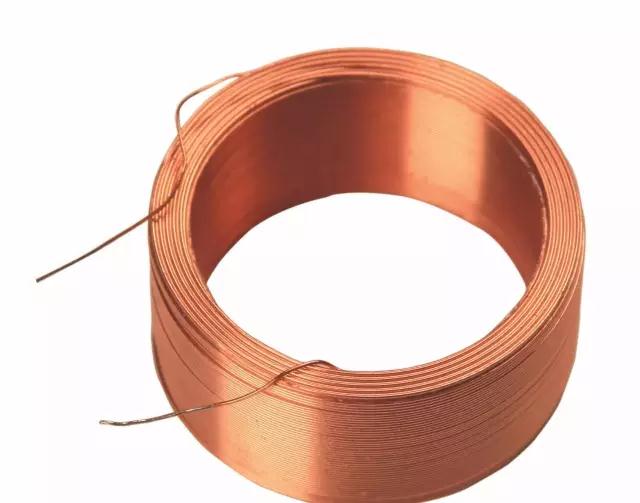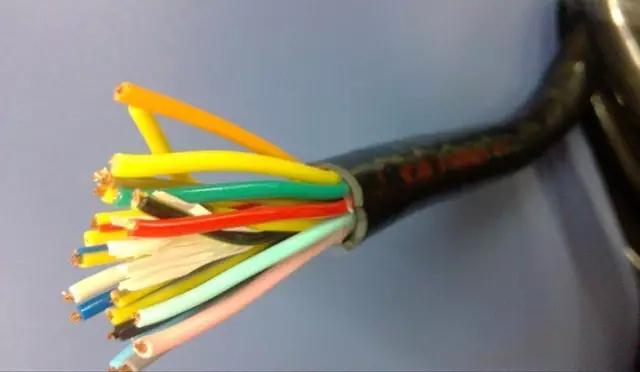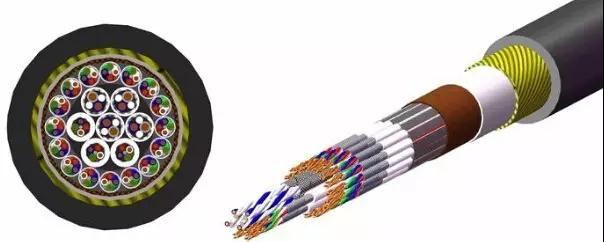1. Bare copper wire
Bare wire and bare conductor products refer to conductive wires without insulation and sheath, which mainly include three series of bare single wire, bare stranded wire and profile wire.
▶Copper and aluminum single wire: including soft copper single wire, hard copper single wire, soft aluminum single wire, hard aluminum single wire. It is mainly used as semi-finished products of various wires and cables, and a small amount is used in the manufacture of communication wires and motor appliances.
▶ Bare stranded wire: including hard copper stranded wire (TJ), hard aluminum stranded wire (LJ), aluminum alloy stranded wire (LHAJ), steel cored aluminum stranded wire (LGJ) is mainly used for the connection of electrical equipment and electronic appliances or components For use, the specifications of the above various strands range from 1.0-300mm2.
2.the power cable
Power cables are used to transmit and distribute high-power electrical energy in the main lines of the power system, including power cables with various voltage levels of 1 to 330KV and above and various insulation.
▶The cross-section is divided into 1.5, 2.5, 4, 6, 10, 16, 25, 35, 50, 70, 95, 120, 150, 185, 240, 300, 400, 500, 630, 800mm2, the number of cores is 1, 2, 3. 4, 5, 3+1, 3+2 cores.
Power cables are classified into low-voltage cables, medium-voltage cables, high-voltage cables, etc. according to voltage levels. According to the insulation situation, it is divided into plastic insulated cable, rubber insulated cable, mineral insulated cable, etc.

3. Overhead insulated cables
Overhead cables are also common to us, and they are characterized by no sheath. Many people have three misunderstandings about this type of cable, and the pie is corrected here.
▶ First, its conductors are not only aluminum, but also copper conductors (JKYJ, JKV) and aluminum alloys (JKLHYJ). Now there is also a steel-core aluminum stranded overhead cable (JKLGY).
▶ Secondly, it is not only single-core, the common one is generally single-core, but it can also be stranded by several conductors.
▶ Third, the voltage level of overhead cables is 35KV and below, not 1KV and 10KV.
4. Control cable
The structure of this type of cable is similar to that of power cables. It is characterized by only copper core and no aluminum core cable. The conductor cross section is small and the number of cores is large, such as 24*1.5, 30*2.5...
It is suitable for stand-alone control or unit control of AC rated voltage 450/750V and below, power stations, substations, mines, petrochemical enterprises, etc. In order to improve the ability of the control signal cable to prevent internal and external interference, the shielding layer is mainly adopted.
Common models are KVV, KYJV, KYJV22, KVV22, KVVP. Model meaning: "K" control cable, "V" PVC insulation, "YJ" XLPE insulation, "V" PVC sheath, "P" copper wire shielding.
For the shielding layer, our common KVVP is copper wire shielding, if it is copper tape shielding, it is expressed as KVVP2, if it is aluminum-plastic composite tape shielding, it means KVVP3. The shielding layers of different materials have their own characteristics and functions. In future articles, we will discuss this topic in more detail.

5. Cloth wires
It is mainly used for home and distribution cabinets. Friends who open hardware stores are most familiar with it. BV lines are often said to be cloth wires. Models are BV, BLV, BVR, RVV, RVVP, BVVB, etc...
In the model representation of wire and cable, I often see this B. Different places have different meanings.
Take BVVB as an example. B at the beginning means wiring. It means the application classification of the cable, just like JK means overhead cable and K means control cable. The flat type represented by B at the end is an additional special requirement for the cable. The meaning of BVVB is: copper core PVC insulated and sheathed flat cable.
6. Special cables
Special cables are cables with special functions, mainly including flame-retardant cables (ZR), low-smoke halogen-free cables (WDZ), fire-resistant cables (NH), explosion-proof cables (FB), mouse-proof cables, termite-proof cables (FS), resistance Water cables (ZS), etc.
▶Flame retardant cable (ZR), low-smoke halogen-free cable (WDZ): mainly suitable for important power and control systems. When the line encounters a fire, the cable can only burn limitedly under the action of an external flame, with less smoke and less harmful gases (halogen) in the smoke.
When the external flame disappears, the cable can also extinguish itself, which minimizes the damage to human body and property caused by the fire. Therefore, this kind of cable is widely used in important places such as petrochemical, electric power, metallurgy, high-rise buildings and dense population.
▶Refractory cable (NH): It is mainly suitable for particularly important power and control systems. When the line encounters a fire, the refractory cable can resist the high temperature of 750 ~ 800 ℃ for more than 90 minutes to ensure safe power transmission, so as to win sufficient time for fire extinguishment and disaster reduction.



